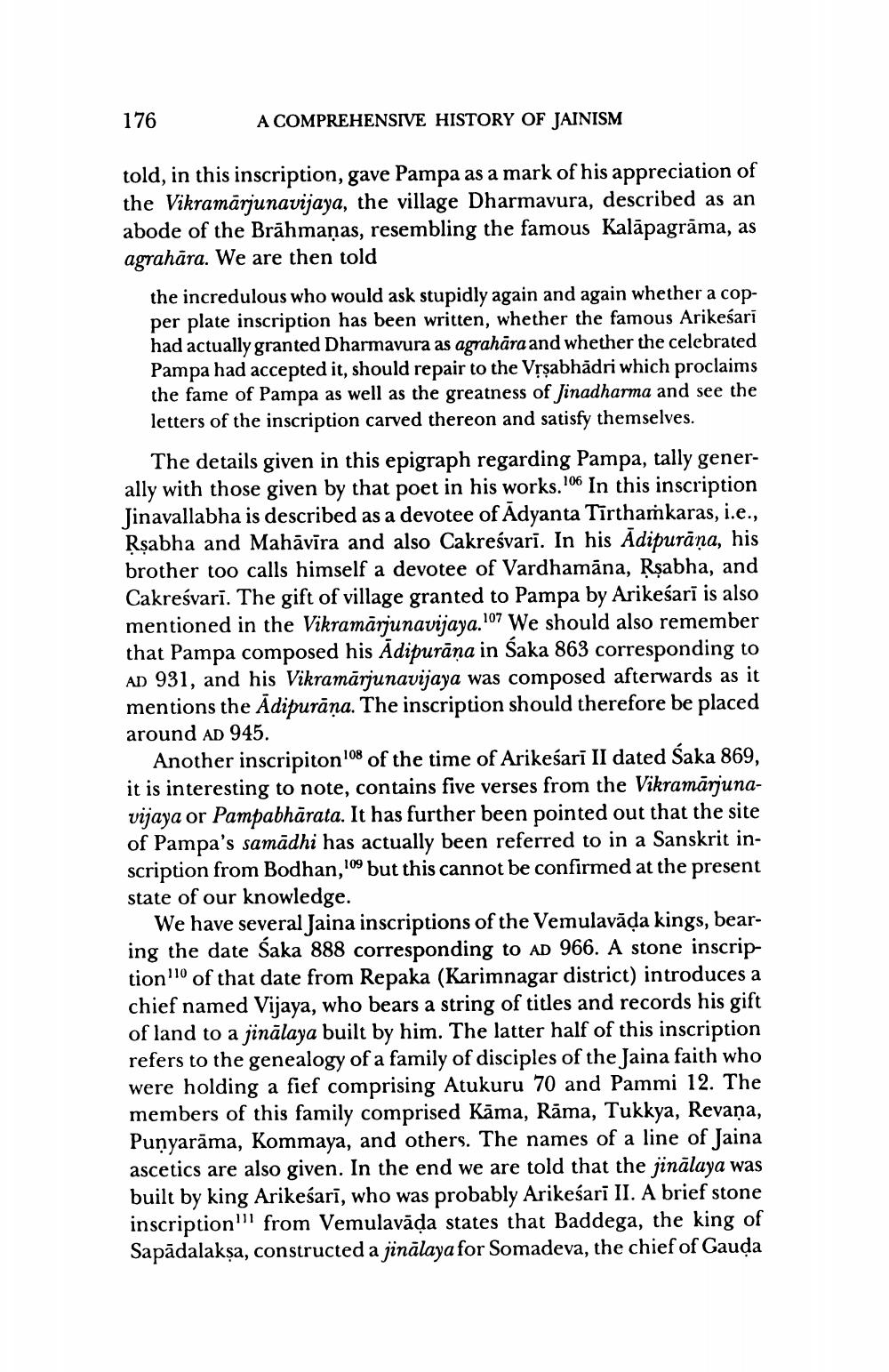________________
176
A COMPREHENSIVE HISTORY OF JAINISM
told, in this inscription, gave Pampa as a mark of his appreciation of the Vikramärjunavijaya, the village Dharmavura, described as an abode of the Brāhmanas, resembling the famous Kalāpagrāma, as agrahāra. We are then told
the incredulous who would ask stupidly again and again whether a copper plate inscription has been written, whether the famous Arikeśari had actually granted Dharmavura as agrahāra and whether the celebrated Pampa had accepted it, should repair to the Vrṣabhādri which proclaims the fame of Pampa as well as the greatness of Jinadharma and see the letters of the inscription carved thereon and satisfy themselves.
The details given in this epigraph regarding Pampa, tally generally with those given by that poet in his works.106 In this inscription Jinavallabha is described as a devotee of Ādyanta Tīrthamkaras, i.e., Rşabha and Mahāvīra and also Cakreśvari. In his Adipurāņa, his brother too calls himself a devotee of Vardhamana, Rsabha, and Cakreśvarī. The gift of village granted to Pampa by Arikeśarī is also mentioned in the Vikramārjunavijaya. 107 We should also remember that Pampa composed his Adipurāna in Saka 863 corresponding to AD 931, and his Vikramārjunavijaya was composed afterwards as it mentions the Adipurāņa. The inscription should therefore be placed around aD 945.
Another inscripiton 108 of the time of Arikeśarī II dated Śaka 869, it is interesting to note, contains five verses from the Vikramärjunavijaya or Pampabhārata. It has further been pointed out that the site of Pampa's samādhi has actually been referred to in a Sanskrit inscription from Bodhan,109 but this cannot be confirmed at the present state of our knowledge.
We have several Jaina inscriptions of the Vemulavāļa kings, bearing the date Saka 888 corresponding to AD 966. A stone inscription" of that date from Repaka (Karimnagar district) introduces a chief named Vijaya, who bears a string of titles and records his gift of land to a jinālaya built by him. The latter half of this inscription refers to the genealogy of a family of disciples of the Jaina faith who were holding a fief comprising Atukuru 70 and Pammi 12. The members of this family comprised Käma, Rāma, Tukkya, Revaņa, Punyarāma, Kommaya, and others. The names of a line of Jaina ascetics are also given. In the end we are told that the jinālaya was built by king Arikeśarī, who was probably Arikeśarī II. A brief stone inscription" from Vemulavāda states that Baddega, the king of Sapädalaksa, constructed a jinälaya for Somadeva, the chief of Gauda




